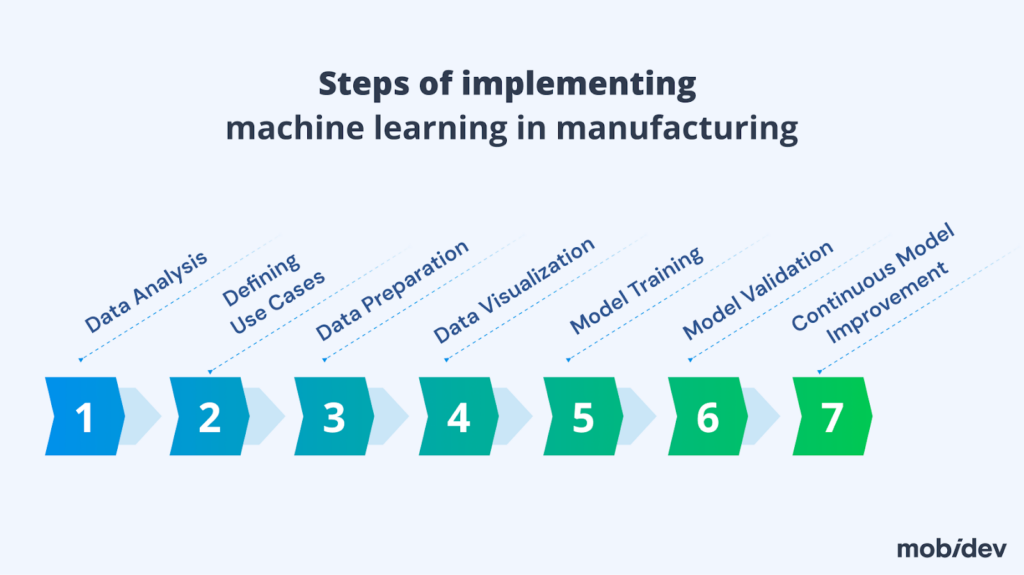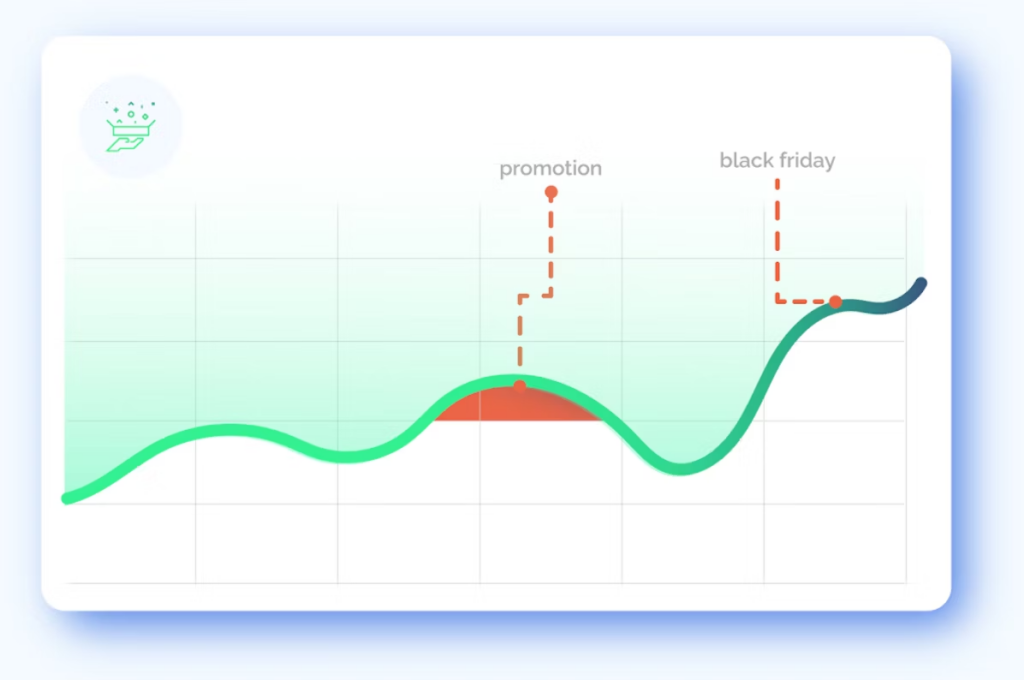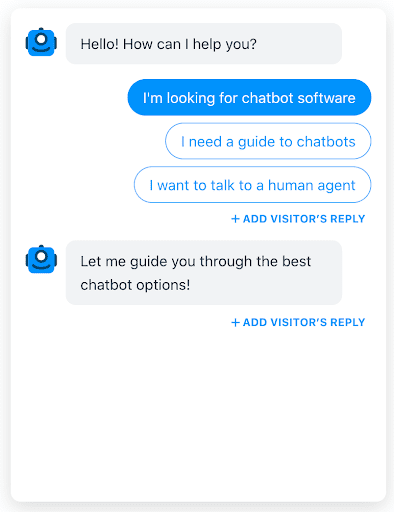Machine Learning for Small Businesses
By Alex Carter on September 23, 2024
Artificial intelligence and machine learning are two words we hear a lot these days. Companies across all industries are leveraging these technologies to boost their productivity and grow their businesses. But how about entrepreneurs and small business owners who are often short on resources? That’s not a problem at all.
Unlike the common belief that only big players have the resources to use technology, using AI and machine learning for small businesses can help bring operational costs down and set them on the journey to success.
Want to learn more about the power of machine learning for small businesses and how you can take advantage of it? Keep reading. In this article, we’ll cover some of the most exciting uses of machine learning that can be beneficial for SMBs.
What Is Machine Learning?
Despite the fact that artificial intelligence isn’t a new thing, there’s still a lot of confusion going around it. One of them is not understanding the difference between AI and machine learning – many people perceive it as one and the same thing. Which isn’t true.
Machine learning is a subset of artificial intelligence that focuses on learning from volumes of information and providing valuable insights based on the dataset. Machine learning algorithms process information, identify patterns, make predictions, and tell you which changes need to be made to keep growing.
Let’s say you own an online store. One way to predict customer demand is to manually analyze data, which would take you tons of time without necessarily bringing the desired outcomes. There are many things that may easily skip the attention of a human being, to say nothing of situations that can easily slip out of control.
Alternatively, you can train machine learning algorithms to do this job for you. By feeding ML with information about your customer’s recent purchases, you can learn what your potential prospects might be interested in and replenish your stock with the right stuff. More importantly, you can tailor personalized recommendations, increasing the likelihood of repeat business.
Here’s a short breakdown of the key components of machine learning:
- Algorithms – these are the mathematical models that process data to identify patterns and make decisions;
- Data – the information you feed into the algorithms, which they use to learn and make predictions;
- Training – the process of teaching algorithms using data so they can make accurate predictions;
- Evaluation – assessing the performance of algorithms to make sure their predictions are accurate and can be trusted.
Technical details aside, the whole idea of using machine learning is that it can do all the legwork for you, analyzing vast amounts of data, predicting customer demand, and giving you insights into the best strategies for the future. As a result, instead of doing all analysis manually and spending hours of time, you can focus on more important tasks and grow your business.
A Quick Glimpse into Statistics

If you think that small businesses don’t use ML, think again. The statistics we’ll show you prove the opposite, highlighting the importance of adopting technology for SMBs. Just so you get an idea, the number of small business owners that already use machine learning to some extent exceeded 50% in 2024, with another 30% planning to adopt it in the next couple of years.
These numbers are backed by other research. According to IDC, the money spent on technology worldwide reached over $100 billion in 2023-2024. These kinds of spendings tell us the same thing. Businesses recognize the potential machine learning offers and keep investing in it.
You might be surprised but customers actually expect businesses to use some form of AI to enhance their services. According to Salesforce, we’re talking about 62% of people. Failure to meet the expectations of these people can result in losing leads and diminished customer satisfaction.
The Benefits of Using Machine Learning for Small Business Owners
When talking about the benefits of machine learning, it’s worth touching upon the common challenges that the majority of small business owners face. This can help you put in perspective the real value of the technology.
- Lack of resources. First and foremost, a vast majority of SMBs do not have enough resources to handle a large workflow. This often prevents businesses from scaling as they simply do not have enough “hands” to cope with the job;
- Many repetitive tasks. The next problem is tightly connected with the previous one. Small businesses are more likely to have trouble managing their workflows because of the number of repetitive tasks requiring a workforce to handle them;
- Getting recognition can be a problem. For small businesses, it can be a long journey to build brand awareness. Brand awareness grows slowly, usually taking from a few months up to a few years depending on the effort invested in marketing;
- Limited budget. Just like with a workforce, budget is often a problem for SMBs. Most entrepreneurs, as well as small business owners, do not have bottomless pockets, preventing them from amping up their marketing campaigns – and scaling as a result;
- Loss of interest. When the efforts put into a business do not produce the desired results, it can easily lead to burnout. Oftentimes, small and medium-sized businesses leave the “game” simply because they do not see any return on their investments.
Looking at these challenges, it’s easy to see that the core problem lies in the lack of resources. For SMBs to steadily grow and expand, it’s essential to have “extra hands” to handle the load. Machine learning just lends you that helping hand.
With ML, you get a team of tireless workers who are ready to take on any challenge that comes their way. More specifically, you get a team of data-driven scientists who can see one step ahead of you and bring you to the level of big players – in a short period of time.
Here are just some of the benefits that make ML worth consideration for small businesses that haven’t been using it yet.
Lower Operational Costs
Before anything else, machine learning helps bring operational costs down. Rather than hiring several people to do repetitive, mundane tasks, you can use technology to automate them.
For example, if you’re running an online store, you’d need someone to answer queries during the day, but you will also need someone to process requests in the evening. If you don’t have people to reply to inquiries, the chance of your business staying afloat is very slim seeing the competition.
The problem is, more workforce means more operational costs. Machine learning solves this problem.
You can use chatbots to answer customer questions round-the-clock. This way, not only will you free people from mundane work – and reduce your operational costs – but you will also increase the efficiency of your business by making sure your prospects get feedback exactly when they need it.
Tailor Your Services

Another indisputable advantage of using ML is its exceptional ability to guess customer demand. Based on the previous purchase/search history, the algorithms can tell you what your audience is interested in, helping you expand your list of services with the right stuff.
This way, instead of just adding more inventory without any understanding of the customer demand, you can replenish your stock with products people want. As a result, you can set the right direction for your business to grow and increase the number of conversions.
A great illustration of a small business that did just that is Ling App. Through the use of ML, they quickly figured out what languages their audience was interested in and expanded their offer.
Improve Customer Service

One thing large businesses are so good for is the quality of service they offer. It almost feels like they know what you’re looking for. Machine learning can help level the playing field for small businesses. By leveraging technology, you can make better use of your unstructured data and offer enhanced customer experience for your prospects.
How many times have you thought of hiring someone to set up Facebook campaigns and deal with social media posts, reviews, and emails? In large companies, these duties are often distributed between at least two people.
With machine learning, however, you don’t need any additional hires. The algorithms can act on your customer data just as well as marketing specialists. They can process tons of information. More importantly, they can understand the intent behind every message, allowing them to make the right conclusions and come up with the right strategy for the next steps.
Make Data-Driven Decisions
The hardest part for any small business is making decisions. Should you continue to fill your inventory with products that you feel are losing popularity with your audience? Or should you expand your offerings to something you haven’t offered before? Is this the right time to grow? Or is it better to play it safe and continue doing what you’ve been doing?
These are the questions that often bother small business owners but can’t be answered without extensive analysis of the market dynamics. For this reason, many SMBs don’t do any active movements and grow at a slow pace.
The insights you get from machine learning can become a game-changer. With its exceptional ability to predict trends and purchasing behaviors, you’ll see opportunities that were not visible before and make much better business choices.
Boost Productivity
Last but not least, using ML allows you to significantly increase your productivity. Think of all the time and resources it usually takes you to do the mundane tasks you have to do daily. Just answering emails can take a good chunk of time, to say nothing of something more substantial like, for example, removing a scam or doing some bulk work on your website.
With ML, you can use scripts to speed up repetitive tasks, allowing your team to focus on more strategic initiatives. This automation not only saves time but also reduces the likelihood of a human mistake, leading to more consistent and reliable outcomes.
Implementing ML in a Small Business: Step by Step

Now that we’ve covered the benefits of machine learning, let’s see how it can be effectively implemented by a small business – and whether the whole game is worth the candle.
Step 1: Determine Your Goals
Before you pick up a phone to schedule a meeting with a machine learning expert, answer a few questions to understand if machine learning is exactly what you need. Brainstorm with your team what tasks eat the most of your time and are worth automatizing.
Think logic. If it’s just a small handful of tasks, you could still automate them, of course, but would the effort be worth it? Use machine learning as a tool to resolve pressing issues like:
- Limited development resources;
- Repetitive tasks;
- Customer demand predictions.
At the same time, don’t make decisions in a rush. Take the time to evaluate the quantity and quality of your existing data. If your data is lacking or of poor quality, the algorithms may produce unreliable predictions, making the whole initiative not worth it.
Step 2: Set the Right Expectations
While machine learning can help solve lots of problems, it’s not a magic pill. You need to have a clear understanding of what ML can do and what it can’t do to set the right expectations and use its capabilities in full.
When integrating ML, don’t expect magic right away. For one, you need time to learn to utilize it fully. If you don’t have a qualified specialist who can guide you through the process, this can easily take up to a few months.
Finding a specialist well-versed in ML can be a challenge in itself. The demand for AI and ML talent is high, and the competition is fierce. Many small businesses have difficulties in hiring tech talent for AI-related roles.
You should also bake in some time on training. Whoever is going to use ML would need some time to learn to use it and optimize it for your business needs.
Data privacy is another concern. When integrating technology, it’s vital to ensure the practices you use are clear and transparent so you stay compliant and your audience can trust you.
Step 3: Train the Model
Now you can move to the next step – training the tool. This is a time-consuming but very important step. How well the tool is trained is a determining factor in the efficiency of the ML work. To make it a tad bit easier, we’ve broken down the process into several key steps:
- Start by collecting data. You need relevant and high-quality data to feed into the tool;
- Clean data. Go over the data you’ve got and organize it. It’s important to remove inconsistencies and feed algorithms with clean data that has appropriate labels;
- Select the model. Now choose appropriate algorithms based on your business goals;
- Train. Use your data to train the model. You can ask your team to do it or hire someone else from the outside. Loop in the option to add some feedback so that ML algorithms can train in real time;
- Evaluate. After some time of learning, assess the model’s performance using metrics like accuracy and precision;
- Optimize. Make adjustments to the model to improve its predictive capabilities if needed.
That’s basically it. If you’ve implemented ML successfully, it won’t take long to see the results.
Practical Uses of Machine Learning for Small Businesses
We’ve already covered a few uses of ML when we discussed its benefits, but let’s take a deeper dive and uncover its full potential. If you’re still on the fence, it will help you realize if it’s something that can bring value to your business.
Market Analysis
Doing market research is the key step that determines business success. You need to know what people you’re targeting and what unique services can be offered to fill the missing gap. The flip side of the coin is that doing this research isn’t an easy job. In fact, it can easily take up to weeks, or even months, depending on the scale and industry of your business.
That’s where ML comes to the rescue. With its ability to analyze vast amounts of data, machine learning can provide you with invaluable insights into your customer behavior and purchasing patterns. Equipped with this knowledge, not only can you get a clear portrait of your customer but you can also tailor your offerings, ensuring they fit the demand.
Forecasting Demand

One thing small businesses can’t afford is spending money on inventory to have it just in case. This is especially true for businesses offering perishable products with a short shelf life. However, forecasting customer demand can be tough. There are so many factors that need to be considered, from market trends and seasonal fluctuations to unexpected events.
Getting it wrong can lead to overstocking, tying up business capital, or understocking, resulting in missed sales opportunities. Machine learning proves invaluable here. By scrutinizing historical sales data as well as additional factors like promotions, holidays, special events, or weather changes, it can come up with accurate predictions for future demand.
Pricing Optimization
Pricing is another thing that can be tough to determine. If you set your prices too low, your business won’t make profits, while if you set them too high, you’ll lose many leads. With machine learning, however, you can make sure your pricing points are just right.
The beauty of technology is that it can sift through thousands of your competitors in next to no time. By analyzing your competitors’ prices, as well as customer purchasing behavior, ML algorithms can tell you what price will allow your business to remain competitive while ensuring you make profits and don’t lose money.
Automation of Content Creation Process
Writing content is one of the key things that businesses need to do to succeed. Well-optimized content can help you get more exposure on Google and bring in more leads. However, for small businesses short on resources, writing content can be a very expensive endeavor. It’s not enough just to write content. You need lots of content and you need it coming in consistently.
The technology allows you just that. There are many great ML-enabled tools designed to help small businesses craft content. A case in point is Hootsuite. With the help of tools like this, you can figure out which word or phrases pique the most interest in your audience and generate impactful content around it.
Chatbot Implementation

Using chatbots on your website or social platforms can help enhance customer experience and ensure you don’t miss a lead. Generally, there are two types of chatbots you can use: rule-based and AI robots. Which one to choose comes down to the specifics of your business.
The strong suit of AI-enabled assistants is that they can mimic human interactions, answering customer questions in a very human-like manner. These days, one may not even be able to tell if they are talking to a real person or a virtual bot.
On the other hand, if you don’t need to answer any complex questions, rule-based chatbots might be more suitable. These bots operate based on predefined rules and scripts, making them easier to implement and maintain.
Final Thoughts
To wrap it up, the use of machine learning can be a real game-changer for small businesses. Just by integrating ML, small businesses get a chance to grow big, predict the future, and do more work while spending less money, effort, and time. What’s more, they can get a competitive edge, allowing them to tussle even with big players who’ve been in the market for a long while.
Surely, implementing ML comes with its own challenges. You’ll need money to get new tools and time to learn to use them effectively, but the return on the investment makes the whole game well worth it. In fact, it’s the only way small businesses can scale and achieve success.
Posted in blog, Web Applications
Alex Carter
Alex Carter is a cybersecurity enthusiast and tech writer with a passion for online privacy, website performance, and digital security. With years of experience in web monitoring and threat prevention, Alex simplifies complex topics to help businesses and developers safeguard their online presence. When not exploring the latest in cybersecurity, Alex enjoys testing new tech tools and sharing insights on best practices for a secure web.
